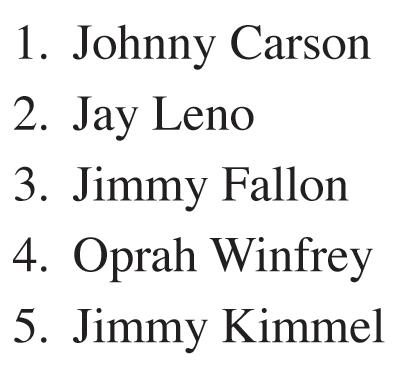
























by Kathy Wolfe





In honor of Johnny Carson’s birthday, October 23 has been designated TV Talk Show Host Day, giving Tidbits the opportunity to tune into some familiar faces and a few facts about an assortment of these nighttime entertainers.
JOHNNY CARSON
• Born in Iowa in 1925, Johnny Carson became fascinated with magic at age 12 and purchased a mail-order junior magician’s kit. After studying the booklet of instructions he practiced card tricks and magic tricks on his family. At age 14 he performed for the first time in a public appearance at the local Kiwanis Club as “The Great Carsoni,” wearing a top hat, fake moustache and a cape handmade by his mother. He was paid $3 for each performance.
• Carson served in the United States Navy during World War II aboard the “USS Pennsylvania” in the Pacific as a communications officer in charge of decoding encrypted messages. After the war







Talk Show Hosts Turn to page 3



















(Answers on page 16)



1. GEOGRAPHY: Which U.S. state is the only one that borders on two oceans?
2. LITERATURE: Which famous author used the pseudonym Richard Bachman early in his career?
3. ANIMAL KINGDOM: What is the national animal of France?
4. MATH: What is the sum of the interior angles in a triangle?
5. HISTORY: Who was the first American president to win a Nobel Peace Prize?
6. GENERAL KNOWLEDGE: Which ancient civilization built Machu Picchu?
7. ACRONYMS: What does the computing acronym API stand for?
8. MOVIES: What is the name of Elle Woods’ Chihuahua in “Legally Blonde”?
9. MUSIC: Which musical instrument has 88 keys?
10. TELEVISION: Which television sitcom character is famous for saying, “Did I do that?”?
Answers
1. Alaska: Pacific Ocean and Arctic Ocean.

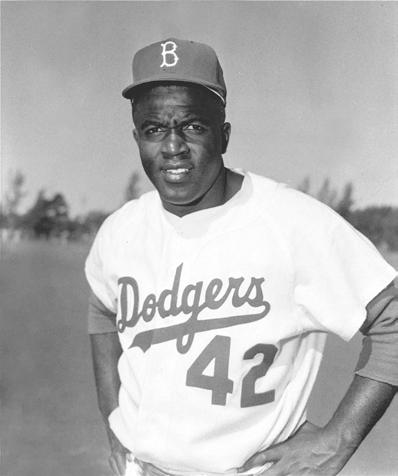
Baseball hero Jackie Robinson passed away on October 24, 1972 at the young age of 53. This week Tidbits honors this famous sports icon and civil rights legend with the facts on his remarkable life and career.
• Jack Roosevelt Robinson, the grandson of a slave, was named after President Theodore Roosevelt, who had passed away 25 days before Jackie’s birth in 1919. His single mother moved with her five children from Georgia to Pasadena, California, where Jackie grew up in poverty.
• Following his graduation from Pasadena Junior College, Robinson enrolled at UCLA in 1939. While we think of Robinson as a baseball superstar, he became UCLA’s first athlete to win varsity letters in four sports -- baseball, basketball, football, and track.
• He went 4-for-4 with four stolen bases in his very first UCLA baseball game. Robinson was the football team’s leading rusher in 1940, and still holds UCLA’s record for highest rushing yards per carry in a season. On the basketball court, he led the conference in scoring for two years. In track, Robinson was the NCAA broad jump champion and qualified for the 1940 Olympics, which unfortunately were canceled due to World War II.
• In 1941, Robinson dropped out of UCLA in order to provide financial assistance for his mother. He began playing semi-pro football in Hawaii while also working in construction. His last game with the Honolulu Bears was two days before the attack on Pearl Harbor.
• He served in the U.S. Army from 1942 to 1944, during which time he was arrested and courtmartialed for refusing to move to the back of a military bus to take his seat. He was acquitted and received an honorable discharge, but the incident set him on the path for commitment to civil rights.
• Afterwards, he signed with the Kansas City Monarchs of the Negro leagues in 1945, where he caught the eye of Branch Rickey, general manager of the Brooklyn Dodgers, who thought he would be the perfect candidate for breaking the MLB color line. Rickey signed him to play on their minor league team, the Montreal Royals.
• On April 15, 1947 and amid much controversy, Robinson made sports history when he debuted with the Brooklyn Dodgers as the first black player in Major League Baseball.
• The 1947 season brought 175 hits, 29 stolen bases, and a .297 batting average, earning Robinson the inaugural Rookie of the Year award. In 1949 his average was .342 with 203 hits, 124 RBI’s, and 37 stolen bases, and the National League’s Most Valuable Player award, the first black ever honored with the coveted title.
• During his ten-year MLB career, Robinson won the inaugural Rookie of the Year Award in 1947 and was an All-Star for six consecutive seasons
from 1949 through 1954,
• He played in six World Series and contributed to the Dodgers' 1955 World Series championship. He was inducted into the Baseball Hall of Fame in 1962 in his first year of eligibility.
• In the midst of the accolades were the hostile remarks and racial discrimination, including not being allowed to stay in hotels, eat in restaurants with his team, ride the team bus, and being banned from using gas station restrooms. Even his own team members protested, while opposing teams deliberately hit him with pitches and spiked him with their cleats. Some spectators even threw bottles at him.
• Breaking the color barrier led to 150 black ballplayers entering the majors in the first five years after his debut. From 1949 through 1962, 11 of the 14 National League MVP’s were black.
• Robinson retired with a lifetime batting average of .311 over 1,382 games. He became the MLB's first black Hall of Fame member and the first black television sports analyst as a commentator for ABC.
• Major League Baseball retired Robinson’s Number 42 in 1997 on the 50th anniversary of his Dodgers debut, the first number to be retired from all MLB teams. In 2009 MLB decreed that all players, coaches, and umpires would wear number 42 every April 15 in his honor.






Talk Show Hosts (from page one)
he began a career in radio as an announcer, then moved to television hosting various game shows until he took over as host of the latenight talk show Tonight from Jack Paar in 1962.
• Carson’s quick wit and punchlines have led to his being declared “King of the Late Night.” From the time he took over Tonight from Jack Paar in 1962 until his retirement in 1992, Carson ruled late-night television, winning six Emmy Awards for his entertainment skills.
• Carson’s final Tonight Show appearance had more than 50 million viewers.
• Carson had a host of other interests besides comedy. His love of classic cars began with the 1939 Chrysler Royal that was a cherished family heirloom, owned by Carson’s father, and the car Johnny learned to drive in. Johnny was a passionate tennis player, even taking lessons from John McEnroe for a time.
• As an accomplished drummer, Carson demonstrated his musical talent occasionally on The Tonight Show. Carson wrote several books, including his best-selling memoir. Fascinated by astronomy, he became close friends with Carl Sagan, featuring the astronomer on the show several times. Carson also had earned his private pilot’s license.
JAY LENO
• Although Carson and many others expected David Letterman to be selected as The Tonight
Show’s replacement host, Jay Leno stepped in as host following Carson’s departure in 1992.
• His first night as host was far from Leno’s first appearance on the show. He performed a comedy routine there in 1977 at age 27, and just ten years later became the show’s permanent guest host. He remained permanent host from 1992 until 2009, earning four Emmy Awards.
• Leno announced retirement plans in late 2008, and was succeeded by Conan O’Brien in June 2009. In spite of those retirement plans, Leno hosted a new prime-time variety show, beginning that September. In early 2010, with declining ratings, O’Brien was no longer the host, and Leno was back in his role at The Tonight Show, where he remained until 2014. Billy Crystal, who had been Leno’s first guest in 1992, was his final guest in 2014.
Jay Leno featured a regular segment called "Jaywalking," during which he approached people of all ages on the streets of Hollywood, asking simple questions about current events, literature, history and geography. The embarrassing amount of ignorance they displayed exposed how little knowledge the average person has gained from the American school system.
• In 2015, Jay Leno launched a new TV series, Jay Leno’s Garage, a popular automotive show that ran for seven seasons before moving to YouTube. His extensive collection of vehicles includes about 185 cars and 160 motorcycles, with an estimated value between $80 million and $100 million. Where are the programs filmed? Where else, but in Leno’s own garage! But it’s not just a garage – it consists of three enormous warehouses spanning an area of 140,000 square feet.



audition the next year led to the role he had craved and he made his debut in 1998 at age 24. By his fourth episode, he was a star, and remained with SNL until 2004.
• Fallon pursued a film career after leaving SNL, but with limited success. In 2009, he was offered the position of host of NBC’s Late

1.
2.


JIMMY FALLON
• Jimmy Fallon stepped in as host of The Tonight Show in 2014, and remains as the program’s current host. As a child, he loved comedy and music, and sharpened his skills of impersonating others. Serving as an altar boy in his youth led to a desire to become a priest, but he entered college to pursue a degree in Computer Science.
• When he was just one semester short of his degree, Fallon dropped out to chase his dream of comedy in Los Angeles. He had been hooked on Saturday Night Live his entire life, nurturing a vision of one day nabbing a spot in the cast. At 22, he scored his first audition, which turned out to be unsuccessful. However, a second


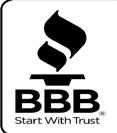
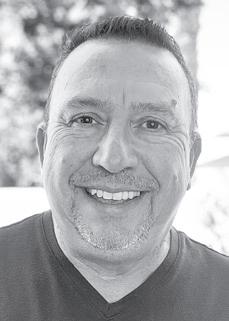

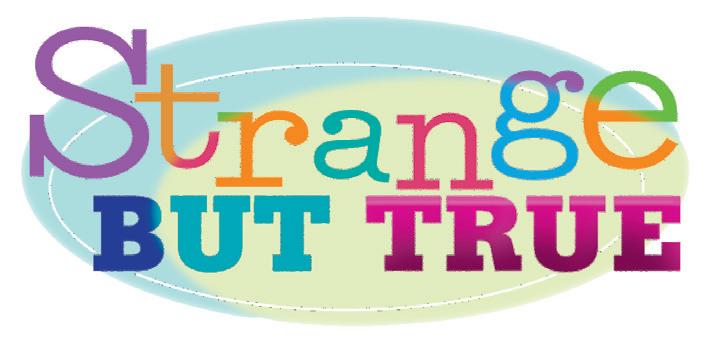
By Lucie Winborne
* In Birmingham, England, 2.5 million Mills & Boon books were pulped to create the top layer of the M6 toll road.
* A dog that had been kicked by a driver returned with a bunch of its friends and proceeded to trash the man’s car, chewing & ripping off the fenders and wipers.
* Charles Joughin, the chief baker on the Titanic, allegedly treaded water for two hours before being rescued from the sunken vessel. He later claimed that the copious amounts of whiskey he consumed before the ship went down kept his body warm enough to survive the subfreezing ocean temperature.
* Arnold Schwarzenegger once eloquently said: “I love Thanksgiving turkey. It’s the only time in Los Angeles that you see natural breasts.”
* Alcatraz holds an annual Indigenous Peoples’ Thanksgiving Sunrise Gathering, also known as Unthanksgiving Day, to commemorate the 1969 occupation of Alcatraz and to protest the colonialist history of Thanksgiving.
* The red parasol moss Splachnum rubrum grows only on moose poop.
* Some birds change the size of their brain every winter.
* In the 1970s, the NFL team now called the Seattle Seahawks opened a competition in which the public could suggest and vote on a name for them. About 1,750 suggestions and 20,000 entries were received.
* “Subdermatoglyphic” is the longest word without duplicate letters. ***
Thought for the Day: “Being the richest man in the cemetery doesn’t matter to me. Going to bed at night saying we’ve done something wonderful, that’s what matters to me.” -- Steve Jobs


by Mary Hunt



by Mary Hunt
For years, I believed an old wives’ tale that bananas will turn black and spoil almost instantly if you put them in the refrigerator. In fact, I even passed this notion on to you. Whoops! Hearing from reader Lin made me reconsider, test, and now, recant. Lin is right. I was wrong!
BANANAS IN THE FRIDGE
I read in your column a while back about how to keep fruit fresher longer. You said do not put bananas in the refrigerator. I beg to differ. We put fresh bananas in the fridge, and they may turn black and ugly on the outside, but inside, even after seven days or longer, they are as fresh and firm as new. Try it. -- Lin
(I have discovered that if I put the bananas in a plastic bag and tie or seal it tightly then place this in the crisper drawer, the bananas retain their yellow color. There’s something about black bananas -- even if they are totally fine inside -- I find to be somewhat off-putting! -- MH)
PICKLED
I have used vinegar as a weed killer for decades. A couple of weeks ago, I found out it is also an excellent ant killer. Simply spray it on them. There is very little odor; what odor there is disappears quickly. I have had a long-time problem with ants in my kitchen and bathroom and do not like to use insecticides for many reasons (i.e., cat and dogs, poison, smell, oily, getting on my skin). Now I don’t have to worry about it and I'm finally rid of them! -- Ann
ASPARTAMED ANTS
Next time there’s an invasion of ants, spread a single packet of Nutrasweet, Equal or Sweet N’ Low (or another sweetener that contains aspartame) over part of the trail. One treatment gets rid of all the ants in less than a day, and I have yet to see them come back. Try it and see. -- Howell
SWEET SKIN CARE
I have a great home recipe for an exfoliant that uses what I have in my pantry. I mix equal amounts of honey and cornmeal and apply to my face, elbows and heels. It leaves my skin feeling wonderful and it smells nice, too. -- Lee
Instead of using those rubbery disks designed for gripping a jar lid to make it easier to open, simply put a rubber band or two around the lid and twist! It gives you a great grip on the lid and it’s much handier than keeping one more thing in your kitchen drawer that only serves one purpose. -- Mara
Instead of purchasing whole peppercorns for use in a grinder, I just fill my grinder full of regular ground black pepper. The grinds are big enough that when ground again, I get a fresh ground pepper taste at a fraction of the cost. And a bottle of coarse ground pepper lasts a lot longer than those tiny bottles of peppercorns.
-- Jennifer
If you make soup, a bouquet garni (spices and herbs tied into a little bundle so they can be easily removed before serving) is a wonderful thing. But instead of buying cheesecloth for this process, I wrap the herbs and spices in a coffee filter, roll it or fold it and wrap it with string. I drop it into the soup pot and fish it out easily with a spoon when the soup is done. -- Jessica
One morning I faced a tough job cleaning the dried-on pancake batter in a bowl. Instead of reaching for a scrub pad, I balled up a piece of used aluminum foil and it worked perfectly to scrub the bowl clean. -- Brenda
I’ve discovered that charcoal lighter fluid works well on removing the residue that stickers leave behind. A little on a cloth does the job. I also found that it does a great job getting oil-based paint out of brushes. It has very little odor and it’s a lot cheaper than the stuff you buy in the store sold for that specific purpose. -Grace * * *
Mary invites you to visit her at EverydayCheapskate.com, where this column is archived complete with links and resources for all recommended products and services. Mary invites questions and comments at https://www.everydaycheapskate.com/ contact/, “Ask Mary.” This column will answer questions of general interest, but letters cannot be answered individually.




October 23 is the day that the swallows depart California’s Mission San Juan Capistrano, as they have done since the first documented exodus in 1812. Tidbits commemorates the day with facts about this old Spanish mission and its famous birds.
• The mission was founded by Spanish Catholic missionaries of the Franciscan Order in 1776, and named for an Italian priest of the Order. It is home to The Great Stone Church and Serra Chapel, California’s oldest building still in use. The original priests’ quarters have survived as well.
• In 1812, a 7.5-magnitude earthquake destroyed the Great Stone Church and bell tower, and the ruins became the perfect place for the mud nests of the American cliff swallows. The swallows leave the Mission every October 23, observed as a day of mourning for the church’s Saint Joseph.
• They embark on their yearly migration to their winter home 6,000 miles (10,000 km) away in Goya, Argentina, flying up to 60 mph (96.5 km/ hr), returning on March 19, St. Joseph’s Day.
• In the early 1900s, the migrating birds’ return became an annual established tradition, instituted by Father John O’Sullivan, who maintained his story of contributing to the bird’s shelter at the Mission.
• According to the legend, Father O’Sullivan was walking past a new hotel in the community,
and noticed the innkeeper using a long pole to destroy swallows’ nests under the structure’s eaves. The panicked birds were darting here and there, squealing in terror at the loss of their homes and young.
• O’Sullivan questioned the proprietor as to where the swallows would go, and received the reply that the dirty birds were a nuisance, he was getting rid of them, and didn’t care where they went. The priest spoke to the birds, “Come on, swallows, I’ll give you shelter. Come to the mission, there’s room enough there for all.”
• Father O’Sullivan created a festival for the swallows’ return every March to the eaves and stone walls of the Mission, with the townspeople gathering to welcome them.
• In the 1950s, the number of swallows reached their peak, with an estimated 25,000 birds nesting at the Mission. However by 1970, less than 5,000 swallows were returning. A devastating rainstorm in 1983 flooded the nests, drastically reducing the numbers.
• Today’s population is less than 1,000 birds. Several factors have contributed to the decline, with urban development in the area as the major factor. With the population of San Juan Capistrano topping 35,000, many of the birds’ water sources have disappeared. Noise and vehicle traffic have disturbed nesting habits, there are fewer insects to eat, and an increase in predators have all added to the decline.
• A restoration project at the Mission in the 1990s removed the mud nests from the mission walls, and the birds moved to other areas of town – a nearby housing development, on cliff edges, beneath bridges, and in culverts. An intensive effort is in place to attract the famous feathered friends back to the Mission.
• In 1940, Leon Rene wrote a song “When the Swallows Come Back to Capistrano” as a tribute to the swallows’ return. It was recorded by several famous 1940s musicians, The Ink Spots, Fred Waring, Guy Lombardo, and Glenn Miller, reaching No. 4 on the charts.
• Today the event still draws large crowds as a




popular tourist attraction and for certain cultural events even though the birds are not as numerous as they once were.





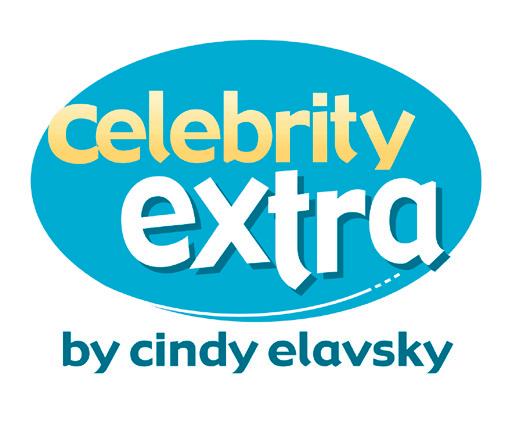

Q: When is “Scrubs” returning, and will it be on NBC or just on a streaming platform? Who all is coming back? -- S.J.
A: The hilarious hospital sitcom “Scrubs” aired for eight seasons on NBC, but it was ABC that brought it back for a ninth with a new group of interns, calling it “Scrubs: Med School.”
Zach Braff still starred in this season, but it just wasn’t the same without the entire original cast. Fortunately, ABC is granting the show a new life yet again with a “Scrubs” reboot including most of the OGs -- Braff, Donald Faison and Sarah Chalke.

It’s been 15 years since the series ended. “Scrubs” creator Bill Lawrence told TVLine his hope would be that “we establish where everybody from [the original show] is, whether they’re still with us at the hospital or not.” This includes the janitor played by Neil Flynn and the chief of medicine Dr. Bob Kelso, played by Ken Jen-

1. Taylor Swift: The Official Release Party of a Showgirl (NR) Taylor Swift, Colin Anderson
2. One Battle After Another (R) Leonardo DiCaprio, Sean Penn
3. The Smashing Machine (R) Dwayne Johnson, Emily Blunt
4. Gabby’s Dollhouse: The Movie (G) Laila Lockhart Kraner, Kristen Wiig
5. The Conjuring: Last Rites (R) Patrick Wilson, Vera Farmiga
6. Demon Slayer: Kimetsu no Yaiba - The Movie - Infinity Castle (R) Zach Aguilar, Ryan Bartley
7. Avatar: The Way of Water (PG-13) Sam Worthington, Zoe Saldana
8. The Strangers: Chapter 2 (R) Madelaine Petsch, Gabriel Basso
9. Good Boy (PG-13) Indy, Shane Jensen
10. The Long Walk (R) Cooper Hoffman, David Jonsson
kins. Lawrence further stated, “I hope Ken [now 85] is able to come play with us a little bit. He’s a little older, but we love him so much.”
Other cast members who have been confirmed to be joining the original trio include Judy Reyes as Carla. She’s busy on the hit show “High Potential,” but she’ll be a recurring character on the “Scrubs” reboot. John C. McGinley has also signed on to recur as Dr. Cox. The show wouldn’t be the same without these two, but what about the fabulous dude surgeon Dr. Todd? Fortunately, Robert Maschio has also committed to return in a guest-starring capacity.
An exact premiere date hasn’t been set, but the reboot started filming this October and plans to launch on ABC sometime in 2026.
***
Q: Who is the new cast member on “Saturday Night Live” with the red hair? I know I’ve seen him before. -- K.D.
A: That’s actor and stand-up comedian Ben Marshall. He’s actually been part of the “SNL” writing staff and appeared in digital shorts for the show as part of the comedy troupe Please Don’t Destroy. You might have also recognized him from some TV commercials, as well as the Peacock film “Please Don’t Destroy: The Treasure of Foggy Mountain.” Additionally, he was a guest star on a recent episode of Peacock’s “Poker Face,” starring Natasha Lyonne.
***
Q: Has the “Today” show found a replacement for Hoda Kotb yet? I enjoy the guest hosts, but I’m just curious if Jenna Bush Hager will find a permanent co-host. -- W.B.
A: When Hoda Kotb left the fourth hour of “Today” earlier this year, the show rebranded itself as “Jenna & Friends” with a rotating group of ce-

lebrity co-hosts. Jenna Bush Hager told Us Weekly that she’s really enjoyed the format and not knowing “what’s going to happen tomorrow.”
Fans have speculated that former NBA star Dwayne Wade could become permanent since it was announced that he would be returning in the fall. Other repeat hosts include E! News’ Justin Sylvester, who returned this October.
For now, just enjoy the variety of contenders, and when the right fit is found, Hager will be sure to let us know.
* * *
Send me your questions at NewCelebrityExtra@gmail.com.
(c) 2025 King Features Synd., Inc.
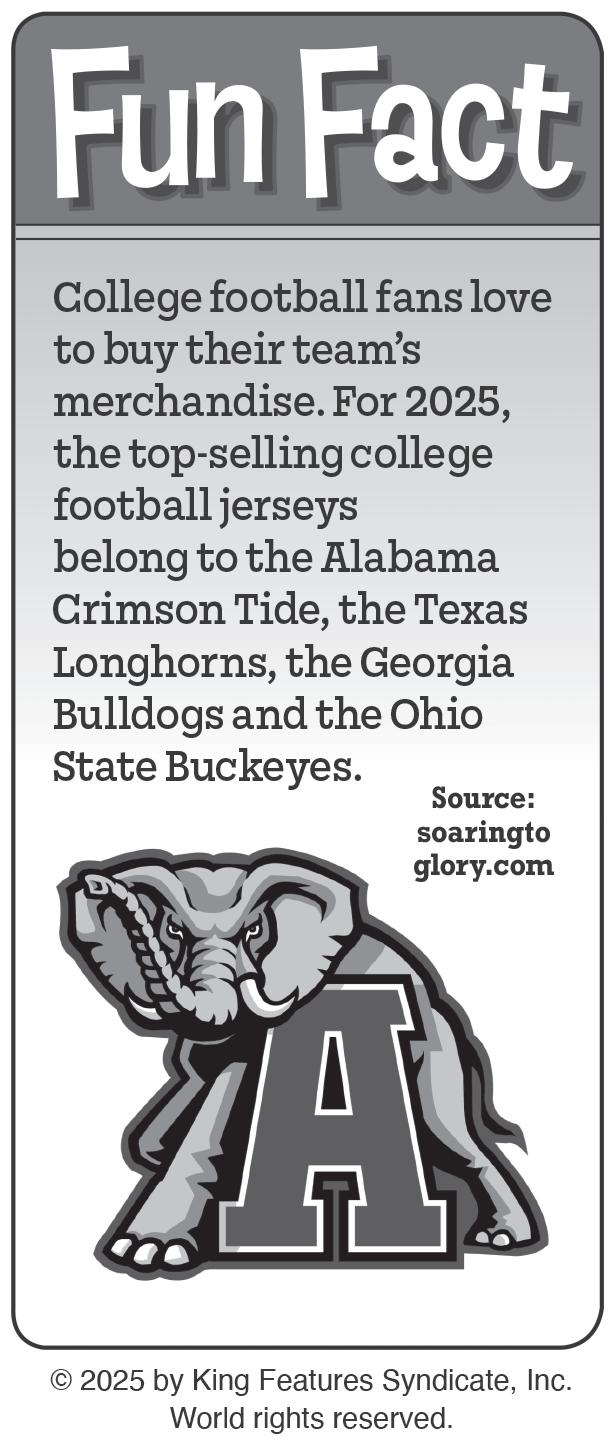
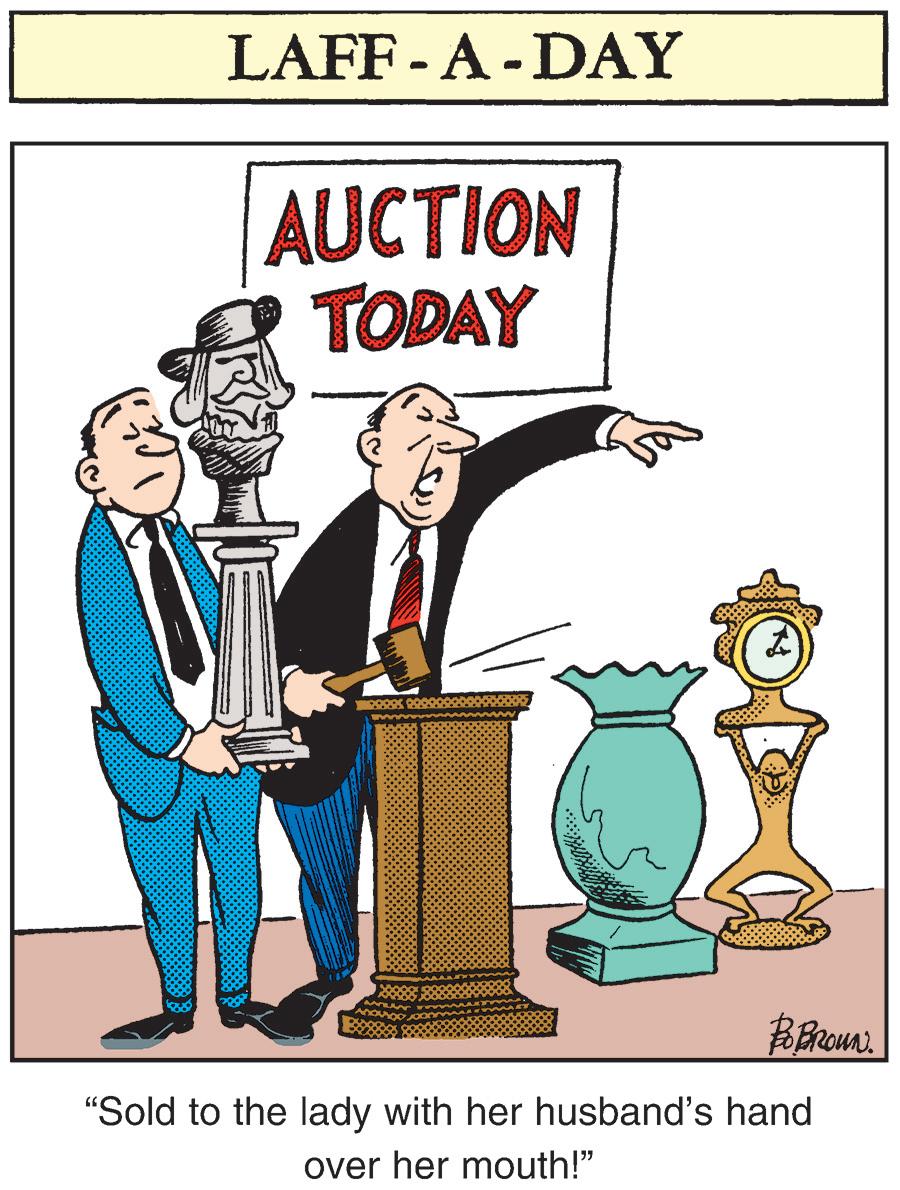

This savory spin on everyone’s go-to autumn gourd is perfect for an evening in the garden.
For the Soup:
1/4 cup olive oil
3 large sweet onions, sliced
3 cloves garlic, chopped
2 large leaves sage, chopped
2 teaspoons fresh ginger, grated and peeled
1/4 teaspoon ground nutmeg
2 quarts lower-sodium vegetable or chicken broth
3 (15-ounce) cans pure pumpkin
1 tablespoon lemon juice
1 teaspoon salt
1/4 teaspoon black pepper
For the Sage and Shiitake Garnish:
1 inch oil
24 small sage leaves Kosher salt
7 ounces shiitake mushrooms, stemmed and very thinly sliced
1. Make the Soup: In 5-quart saucepot, heat oil on medium. Add onions. Cook 40 minutes or until deep golden brown, stirring occasionally. Add garlic, sage, ginger and nutmeg. Cook 5 minutes or until garlic is golden, stirring occasionally. Add broth and pumpkin. Heat to simmering on high, scraping up browned bits from bottom of pot. Reduce heat to maintain simmer; cook 20 minutes, stirring occasionally.
2. With immersion blender or in batches in blender, puree soup until smooth. Stir in lemon juice, salt and black pepper. Makes about 10 cups. Soup can be made and refrigerated up to 2 days ahead. Reheat on medium. (If soup is too thick, add water or broth for desired consistency. Season to taste.) Makes 8 servings.
3. Make the Sage and Shiitake Garnish: In 2-quart saucepan, heat oil on high until hot but not smoking. Add sage leaves to oil. Fry 1-2 minutes or until leaves are browned, stirring occasionally. With slotted spoon, transfer to large paper towel-lined plate; sprinkle with pinch of salt. In batches, add shiitake mushrooms to hot oil. Fry 2 minutes or until deep golden brown, stirring occasionally. Transfer to same plate as sage; sprinkle with pinch of salt. Cool completely. Garnish can be made up to 3 hours ahead. Let stand at room temperature.
Each serving: About 215 calories, 10g fat (1g saturated), 5g protein, 750mg sodium, 32g carb., 9g fiber.
A quick and easy update on an old favorite -- baked apples.
4 large apples such as Fuji, Gala or Honey Crisp (about 8 ounces each)
4 teaspoons margarine or butter
1/4 cup dried cranberries
1/4 cup maple syrup





1. Remove cores from apples but don’t cut through to bottom. Beginning at stem end, peel apples one-third of way down. Stand apples in 8-by-8 inch glass baking dish. Fill each apple with 1 teaspoon margarine and 1 tablespoon cranberries. Pour maple syrup over and around apples.
2. Cover with vented plastic wrap and cook on Medium-High (70 percent power) 10 to 11 minutes or until apples are very tender. Let stand, covered, 5 minutes. Makes 4 servings.
Each serving: About 235 calories, 5g total fat (1g saturated, 1g protein, 51g carb., 6g
recipes/



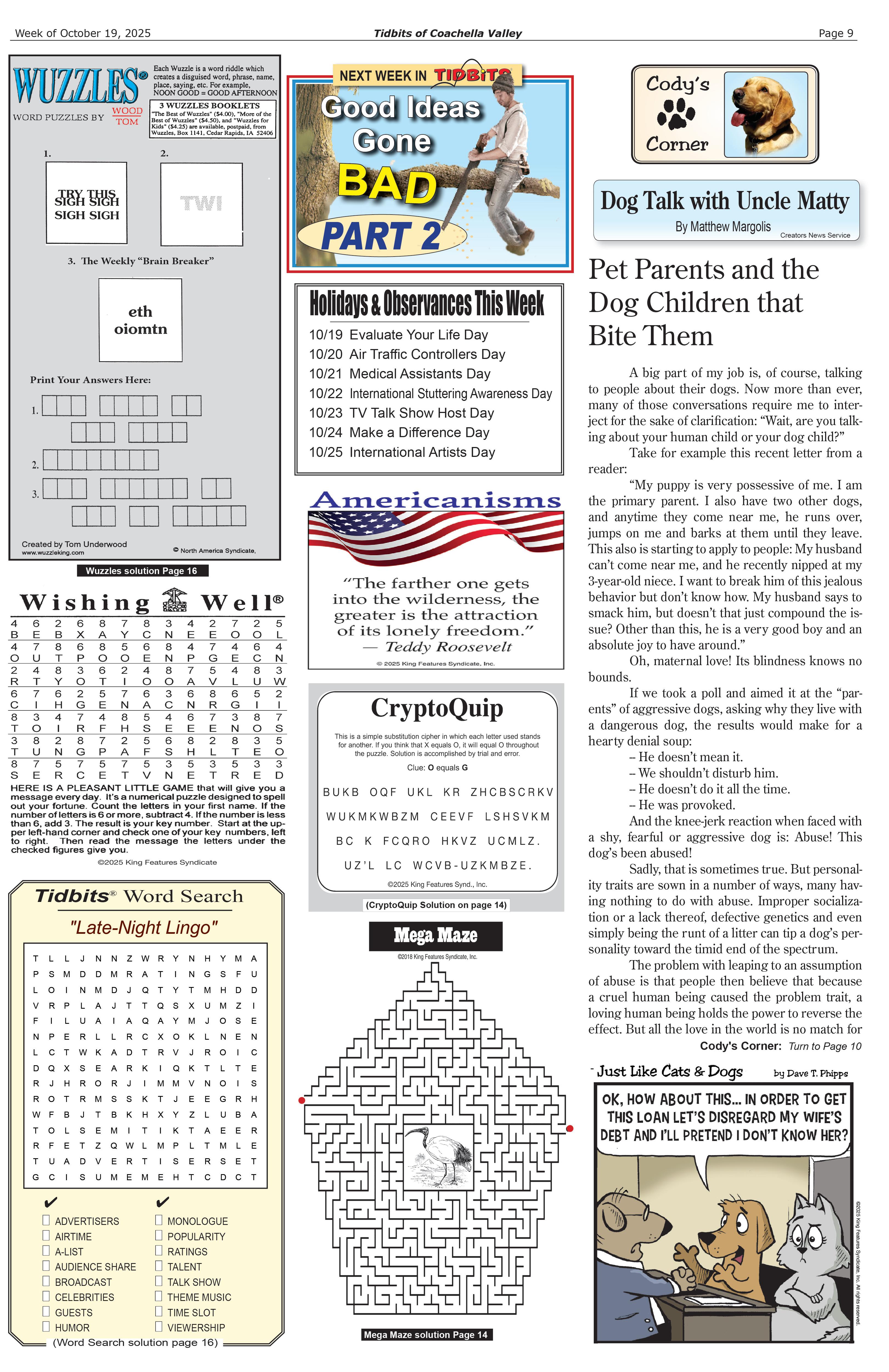
by Matilda Charles © King Features Synd., Inc.
Pets
Some of us have gotten to the age where we wonder if adopting a pet would be the right thing to do, even though we know that having a pet would help with feelings of loneliness. With those very things in mind, a company has created animatronic robot cats -- Joy For All Companion Pets for Seniors by Ageless Innovation. Look for them on Amazon.com (Joy For All Companion Cats) to get all the details. The cats are the size of adult cats and come in three colors: black and white tuxedo, silver and white, and orange tabby.
They run on four C batteries and roll on


their back, open and close their eyes, move their limbs, turn their head and even meow and purr when petted. My own cat took immediate notice when I viewed the video!
These cats are a bit expensive, however, ranging from $125 to $179, depending whether you find one on sale. They’re also marketed to children, perhaps to get them used to a pet before getting a real one, but they’re not toys.
Not a cat person? Rather have a puppy? You’re not being left out. The Joy For All Companion Pet Golden Pup feels like a real puppy. It moves, barks, wags his tail and has a heartbeat. It even comes with a bandanna.
Early Christmas gifts maybe? One thing is certain: These cuddly robots are very cute.
Charles regrets that she cannot personally answer reader questions, but will incorporate them into her column whenever possible. Send email to columnreply2@gmail.com. (c) KingFeaturesSyndicate2025


the brute force of bad genes. Not even the love of a pet parent.
I recently talked with a young woman who just had a baby -- she’s highly educated and intelligent, with a very promising legal career ahead of her. She also lives with an aggressive dog and cannot bear the idea of losing him.
I asked her what made the protection of her dog as or more important than the protection of her newborn child. She explained that she knows what it’s like to feel unloved and unwanted, and that she loves her dog and doesn’t want to give up on him -- adding that nothing and no one loves her as much as her dog.
That’s powerful stuff.
It may be true that some will never know another love like the love of a dog. But that doesn’t excuse bad judgment.
I spoke this week with another woman, whose dog is lunging at people and dogs, has to be walked with a muzzle on, and has already been quarantined by the health department once for biting someone. And she knew he was aggressive before she brought him home. The dog wasn’t trained when she adopted him and she hasn’t trained him since. She brought home a bundle of dynamite and exposed everyone to the danger. Now she wants to be able to take him to the dog park.
If a single person wants to live with a dangerous dog, that’s their choice. I can help modify the aggressive behavior and offer suggestions on how to create the best possible life. But there will be sacrifices. And the dog park is just one of many.
But pet parents who are also the parents of little humans are a different story -- one that can only have a happy ending if the parent protects the right child.
Woof!
* * *
Dog trainer Matthew “Uncle Matty” Margolis is the co-author of 18 books about dogs, a behaviorist, a popular radio and television guest, and the host of the PBS series “WOOF! It’s a Dog’s Life!” Read all of Uncle Matty’s columns at www.creators.com, and visit him at www.unclematty.com.



by Tom Margenau

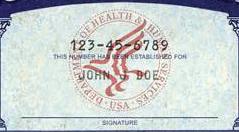
About a month ago, I wrote a column about a trip I took on behalf of the Social Security Administration to Poland in the 1990s. To be honest, I thought readers would criticize me for writing it because I really wasn’t doing what I’m supposed to be doing with this column -- answering readers’ questions about the complexities of the Social Security program.
But surprisingly, I got more positive responses to that column than to any other column I have written in a long time. And many of you asked me to share more stories from that trip. So that’s what I’m doing today.
First, here is a quick recap of how that trip came about. In 1994, Polish Social Security officials were visiting our Social Security Administration headquarters in Baltimore, MD. As chief editor of all the publications the SSA made available to the public, I was asked to address the group on how we did that.
At lunch time, on a whim, I asked one of the Polish officials (his name was Jan) if he wanted to take a drive with me to the “Little Poland” neighborhood of Baltimore. We ended up having a great time. In fact, my guest had a really great time as he drank vodka for hours in a Polish bar -- sharing stories of their homeland with Polish-born Baltimore citizens.
Several hours later, I brought Jan, who was more than a little bit tipsy, back to our meetings, where I promptly got chewed out by my superiors. I assumed Jan was a mid-level manager like me. But it turned out he was the head of the entire Polish Social Security system. In fact, he was a rather high-ranking member of the Polish government.
Long story short. Instead of getting in big trouble for getting him drunk, Jan invited me to Poland to conduct training sessions for the public affairs employees of Zaklad Ubezpieczen Spolecznych, or ZUS, the Polish Social Security agency.
So a couple of months later, off I went to Warsaw, an interesting blend of rather ugly Sovietera buildings with hints here and there of colorful Western influences -- like McDonald’s, Wendy’s and a big IKEA store. (Poland was just starting to come out from under decades of Russian rule.)
There was also a beautiful old town core to the city. All the buildings looked like they were many centuries old. But actually, they were all built in the 1950s, after World War II bombs had almost completely obliterated the city. Very wisely, city planners decided to rebuild the city center to look like it did before the war.
I was expecting to stay in a boring hotel that was a remnant of the Soviet era. Instead, Jan put me up in the very beautiful Hotel Sobieski. (I just checked it out online. It’s still there, although now it is owned by Radisson.) One great memory of that hotel was the free breakfast. It wasn’t just some bland scrambled eggs and sausages. Instead, it was table after table of the most delicious and lavish breakfast offerings I have ever experienced -- before or since. I really had to pinch myself to remind me that I was in Warsaw, Poland, and not in Paris or London or New York City!
The ZUS training facility was in a beautiful building that looked like a French chateau in
the tiny village of Osuchow, about 30 miles south of Warsaw. It was quite a transformation. In the short drive, we went from an emerging modern city to something right out of medieval central Europe. For example, I saw dozens, if not hundreds, of old women stooped over in fields picking potatoes and throwing them into big burlap bags on their backs. At the training facility, people were cleaning leaves off of sidewalks. But instead of a couple of guys with big loud leaf blowers, there were maybe 30 old women with brooms. But not brooms like you would think of them. Instead, they were just some strands of long hay-like straws tied to the end of sticks.
I was there to train the ZUS public affairs officials on how to explain and “market” their Social Security programs to the Polish citizenry. After decades of Soviet domination, it was a new experience for both the government and its people to have a more open and publicly financed social insurance system, not too much different from our own. And for that matter, not different from many other worldwide Social Security programs.
The big main training room was set up like a mini-United Nations. By that, I mean everyone wore headsets. I would speak in English. Two translators in a small booth in the back of the room would turn what I said into Polish. And that is what the trainees heard in their headsets. And if they asked me questions (in Polish, of course), I would hear the English translation in my earpiece.
Here is an interesting side piece about one of the translators. She was in the process of buying a new car. As I explained in my prior column about this trip, Poland at that time was going through a period of hyperinflation. The Polish currency is the Zloty. A 100,000 Zloty note was worth about five U.S. dollars. Also, at the time, the Polish banking system was just recovering from Soviet rule, and there was essentially no such thing as bank loans or credit. So one day, this woman came to the training center with a big shopping bag with literally billions of Zloty notes in it! And sure enough, the next day, she showed up for work with a shiny new car -- and an empty shopping bag!
I used to enjoy lunchtime walks around the

1. The book of Mark is found in the a) Old Testament b) New Testament c) Neither
2. From Genesis 32, who was "greatly afraid and distressed" about a reunion with a brother he had wronged? a) Joseph b) Jacob c) Cain d) Issac
3. What city was beaten down by enemies and sown with salt? a) Shechem b) Gaza c) Jericho d) Berea
4. From Numbers 20, who died on a mountaintop after having his garment stripped? a) Moses b) Noah c) Aaron d) Lot
5. Who lost all his horse-drawn chariots in a sea? a) Ornan b) Balaam c) Pharaoh d) Benaiah
6. Where was Abraham when angels came to visit him? a) City gate b) Rivers edge c) Juniper tree d) Tent door
(Answers on page 16)
tiny village of Osuchow -- staring in amazement at all those old women in the fields picking potatoes. A favorite destination was the village’s version of a 7-11 store. But instead of Slurpies and hot dogs, this place offered Vodka slushies and herring on a stick!
I’m usually pretty good at picking up foreign languages. But Polish, with its cacophony of consonants, was a tough one. After a couple of weeks in the country, I could barely manage “dzien dobry” (good morning), “do widzenia” (good bye) and “dzieki” (thank you). But on one of those lunchtime walks I mentioned, I saw a woman in her front yard with a dog. She was giving the dog a whole series of commands, about a dozen of them (in Polish, of course) that obviously meant things like “sit,” “heel,” “stay,” “roll over,” “shake,” etc, because the dog was dutifully doing all those things.
When I got back to the training class, I got up in front of the group and told my students what I had seen and how embarrassed it made me. One of the students asked, “Why?” And I explained, “I was so humiliated that a dog knew more words in Polish than I did!”
One final observation. I’m looking at a picture of me taken on that trip -- again, in the early 1990s. I’m lugging around a big, heavy suitcase. It wasn’t until a number of years later that rollers were added to suitcases. Why in the world did it take us a hundred years to figure out we could put wheels on our luggage?
*
If you have a Social Security question, Tom Margenau has two books with all the answers. One is called “Social Security -- Simple and Smart: 10 Easy-to-Understand Fact Sheets That Will Answer All Your Questions About Social Security.” The other is “Social Security: 100 Myths and 100 Facts.” You can find the books at Amazon.com or other book outlets. Or you can send him an email at thomas.margenau@comcast.net. To find out more about Tom Margenau and to read past columns and see features from other Creators Syndicate writers and cartoonists, visit the Creators Syndicate website at www.creators.com.
COPYRIGHT 2025 CREATORS.COM









DEAR DR. ROACH: My husband has a pacemaker. We have an induction stove, and his cardiologist was uncertain if it was safe for him to use it. So, he does not cook on the stovetop and stays clear of it when I am cooking.
Is it safe for him to use at least the back burners? When I am out of town or just not home, he is afraid to use the cooktop. I feel like at least the back burners should be at a sufficient distance to be safe. Do you know if it would be safe for him to use? He is 5 feet, 5 inches tall. Thank you. -- V.S.
ANSWER: Induction cooking stoves use powerful electromagnets to create a magnetic field. This creates electronic currents inside the metal of your cookware, which dissipate heat through electric resistance. However, this powerful magnetic field can also trip your pacemaker sensor to turn itself off or change its mode of activity. This is why it’s important to avoid strong magnetic fields when one has a pacemaker.
For an induction stovetop, the recommendation is to stay 60 centimeters (2 feet) away from the device while it’s turned on. This doesn’t mean that he can’t use it at all, just that he shouldn’t be touching the pot continuously and should be using the back burners, which will likely keep him the requisite distance away. ***
DEAR DR. ROACH: My oncologist tries to type out his own notes from my office visit, but I think that he copies and pastes info from old notes. My history with him is very long and detailed (MRIs, CT scans, lab results, etc.). In addition, notes from all my hospital stays for chemo are there.
After my last office visit, he scheduled me for an MRI but made no mention of any change in medication. I read his notes on the app and noticed there was an order for a new medication that was sent over to my pharmacy. It was for procarbazine, which I took as part of my chemotherapy in early 2024.
It was a mistake, but it was very upsetting. I had to make several phone calls to get it straightened out. So, if people have access to online notes, please make sure that you are looking at the most recent information. -- M.D.
ANSWER: Having the ability to read your physician’s notes is, in my opinion, a very good thing. Correcting mistakes is probably the most important reason why. One study found that 25% of doctors picked up an important mistake in their record based on patient feedback. Procarbazine, by the way, is an extremely powerful chemotherapy drug and would never have been dispensed by the pharmacy without confirmation from your doctor. In the hospital, there are multiple layers of protection to make sure that the right person gets the right dose of the right medicine. It wouldn’t be given out lightly.
Reading your doctor’s note hopefully gives a person some insight into a doctor’s thought process and may help people understand why their doctor made the recommendations that they did.
Occasionally I have people who ask to change their medical records. This isn’t allowed, but a note can be made about what the mistake was so that the information can be corrected.
Dr. Roach regrets that he is unable to answer individual questions, but will incorporate them in the column whenever possible. Readers may email questions to ToYourGoodHealth@med.cornell.edu.
(c) 2025 North America Synd., Inc.

by Freddie Groves
The VA appears to have lost $211 million worth of medical equipment from their facilities, approximately 5% of the total. This includes computers, exam tables, microscopes ... over 75,000 items.
Per a recent 13-month audit of medical facilities by the VA’s Office of Inspector General, there might be even more missing, because the VA only tracks nonexpendable items, those with a shelf life of more than two years that have a purchase cost of more than $5,000.
How is it possible to lose that much stuff? One way to “lose” items is when the batteries in the electronic location tags die, making the item impossible to find.
Items were also “lost” because they were not in the location indicated by the inventory system. In this recent audit, the OIG could not find 537,000 items (33%) at the locations indicated on the previous inventory.
Add to that the staff informed the OIG that if certain items were included in a previous audit, they didn’t need to be included in the next audit. Many items had an average of 600 days between inventory dates, increasing the risk that items go missing forever.
It gets worse: The OIG learned that reporting of missing items had not been conducted as it should be in all cases. There were 915 missing item reports (value $31.2 million) that had not been completely investigated, and over 200 items that hadn’t been reported at all.
● Wills
● Trusts
● Power of Attorney
● Healthcare Directives and Living Wills
● New to California? Update your existing Estate Planning Documents!
“Don’t die without it!”

So what happens when proper inventories aren’t done? If nothing else, items can’t be assessed to determine whether they’re in a condition to be used for patient care. If inventories aren’t accurate, medical items can’t be found immediately for patient care. If missing item reports aren’t done, it can’t be determined just how those items came to be missing. And there can’t be accurate planning of future purchases if there isn’t an accurate accounting of what is actually on hand.
I hope VA Secretary Doug Collins is paying attention to this.
(c) 2025 King Features Synd., Inc.


E. Tahquitz

Email: josh@jarthurlaw.com Web: www.JArthurLaw.com
Licensed in California and Florida
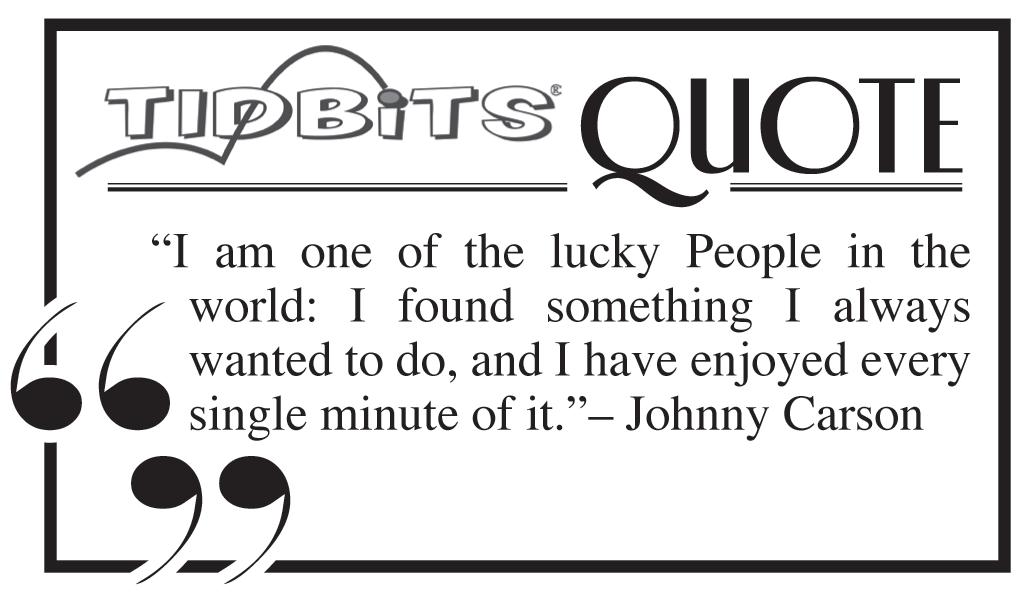

ally answer reader questions, but will incorporate them into his column whenever possible. Send email to colum nreply2@gmail.com.



DEAR SAVVY SENIOR: What does Medicare factor into their star rating system? I need to find a new Medicare plan during the open enrollment period and want to get it right this time. -- Medicare Shopping
Dear Shopping: If you’re shopping and comparing Medicare Advantage plans (the alternative to original Medicare) or Part D prescription drug plans during the open enrollment (Oct. 15 – Dec. 7), you’ll likely find a dizzying number of options to choose from. The Medicare star rating system is a terrific tool to help you narrow down your choices. Here’s what you should know.
Understanding Star Ratings
The Medicare star ratings, which you’ll find in the Medicare’s online Plan Finder tool at Medicare.gov/plan-compare, offers a shorthand look at how Medicare Advantage


and Part D plans measure up for quality and member experience.
In this annual rating system, five stars means excellent, four means above average, three means average, two means below average, and one means poor.
Medicare Advantage plans (but not Part D plans) that get at least a four-star rating get bonus payments from Medicare, which they can use to provide extra benefits.
You should also know that plans that get fewer than three stars for three consecutive years, can be terminated by Medicare, so plans are incentivized to keep their quality up. Such low-performing plans show up on Plan Finder with an upside-down red triangle that has an exclamation point inside.
People in these low-performing plans can switch to ones rated three stars or better during Medicare’s Special Enrollment Period for Disenrollment, which is between Jan. 1 and Dec. 31.
Part D and Medicare Advantage star ratings comprised up to 40 or 30 quality and performance measures, respectively. Ratings for both types of plans are based partly on member experience, customer service, and plan performance.
Part D ratings also assess prescription drug safety and pricing, while Medicare Advantage ratings also look at whether members are staying healthy and if ones with chronic conditions get the tests and treatments typically recommended to them.
Be aware that five-star plans are few and far between. The Centers for Medicare & Medicaid Services (CMS) has revised the Medicare star rating methodology in recent years, making it extremely hard for a plan to earn five stars.
In 2025, just two percent of people with Medicare Advantage/Part D plans and 5 percent in stand-alone Part D plans have five stars. Four-star plans are much easier to find, as more than 70 percent of people with Medicare Advantage are enrolled in them.
Shopping Tips
Here are some tips to consider when evaluating Medicare Advantage and Part D

star ratings during open enrollment:
Don’t choose or reject a Medicare Advantage or Part D plan only because of its star rating. Costs and access to services or health providers should be your top priority when choosing a plan. But a star rating could be your deciding factor when choosing between two plans with similar out-of-pocket costs and coverage.
Don’t panic if a plan’s 2026 star rating is slightly lower than its 2025 rating. The downgrade could be due to a blip in the way the ratings are computed from year to year. It’s best to look at a plan’s star-rating history over several years.
If you’re fine with the cost and coverage of a plan but concerned about its star rating, click through the Medicare Plan Finder for the star ratings subcategories. You’ll be able to see how the plan scored in the specific quality and member satisfaction yardsticks that matter to you.
If you have questions or need help choosing a plan, contact your State Health Insurance Assistance Program (877-8392675, ShipHelp.org), which offers free unbiased Medicare counseling in person or over the phone.










for your 1940s - 1950s set would probably be in the $400 to $600 range.

* * *

by Anne McCollam Creators News Service
Q: Please help me out. Enclosed is a photo of a coffee pot, a plate, and salt and pepper shakers I have. All I know is my mother got this when I was very young. Each piece is marked “American Beauty -- Stetson.” They are in mint condition, and I plan to hand the set down to my daughter.
I would like to have more information on the maker, vintage and value of my set.

A: Stetson China Company began as a decorating and distributing firm in 1919. It was a family business, and they were located in Chicago, Illinois. In 1946, Joseph Stetson purchased the Illinois China Company that was located in Lincoln, Illinois, and the name became Stetson China Company.
Rather than using decals, they outlined designs and then finished it by hand painting. Many of their wares were sold in department stores, and some were made as premiums for the Procter and Gamble Company. They also made earthenware that was decorated with decals and used as premiums for grocery stores.
“American Beauty” is the name of the pattern of your set, which is trimmed in 22 karat gold. It was a very popular line and included dinnerware, coffee pots, salt and pepper shakers, grease pots and syrup pitchers. They couldn’t compete with less expensive imports, as did many other china factories. They closed in 1966. An insurance value

Q: This mark is on the bottom of a pottery vase that I have. The vase stands a little over 5 inches, is decorated with a matte blue glaze and has handles. Around the widest part of the vase are light blue flowers and green leaves with intertwining vines.
Anything you can tell me about the history, the maker and value of my vase will be greatly appreciated.
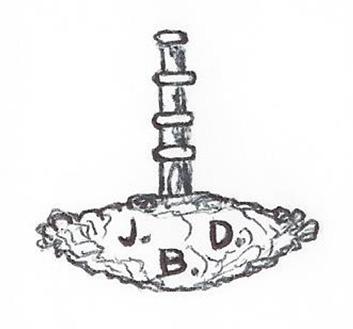
A: Julius B. Dressler made your vase around 1910. They made porcelain and earthenware in Biela, Bohemia, from 1900 to 1945.
Much of Dressler’s work was influenced by the Art Nouveau and the Secessionist movements. It can be recognized by curvilinear lines and scrolling flowers and vines inspired by nature.
Biela is now part of the Czech Republic. Similar Dressler vases are selling in the range of $350 to $550.
Q: I have a question about a Red Wing pottery vase my mother found in an old house in 1934. It was dirty, but in perfect condition. It stands 12 inches tall, 6 inches wide and is decorated with a branch that has 7 leaves against a white glazed background. The inside is blue-green.
How much do you think it’s worth?
A: Red Wing Pottery was founded in Red Wing, Minn., in 1878. In the beginning, they made utilitarian ware that included crocks, stoneware jugs and canning jars. In the 1920s they introduced their art pottery lines. They also produced dinnerware. Red Wing Pottery closed operations in 1967.
Your vase would probably be worth $100 to $150.
Antiques
has recently retired and no longer receives inquiries nor answers reader letters. Due to the popularity of her column, this publication will continue to reprint previous columns of interest to our readers.

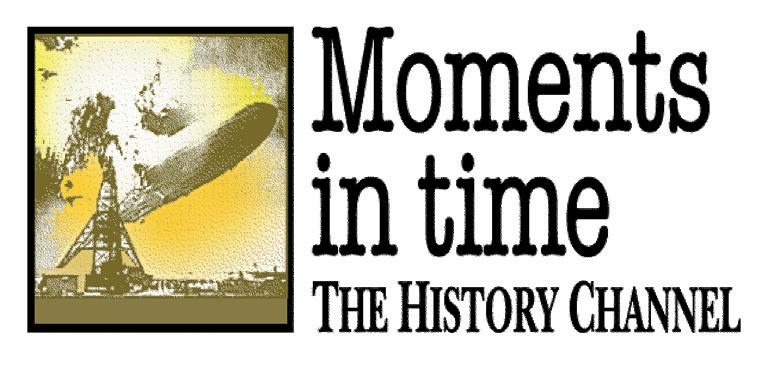
* On Oct. 20, 1967, the mythical Bigfoot was believed to have been filmed in northern California, firing the imaginations of numerous enthusiasts. However, when a prominent researcher sent the FBI a supposed hair sample, agents concluded that it was, sadly, of “deer family origin.”
* On Oct. 21, 1797, the USS Constitution launched in Boston Harbor. A 44-gun U.S. Navy frigate, it was constructed to fight Barbary pirates off the coast of Tripoli, and performed admirably during those conflicts. In 1805, a peace treaty with Tripoli was signed on the Constitution’s deck.
* On Oct. 22, 1895, a train with a faulty brake tore through the Gare Montparnasse in Paris and out the front before landing nose down in the street. Onlookers purchased train tickets just to see the damage caused by the tragedy.
* On Oct. 23, 1958, Boris Pasternak was awarded the Nobel Prize for Literature for “Doctor Zhivago,” a romance set during the Russian Revolution and World War I. The book was banned in the Soviet Union, and the Soviet government forced Pasternak to renounce the honor, but his admirers smuggled the manuscript out of Russia in pieces and the CIA helped with distribution behind the scenes. Appearing in numerous translations around the world, it was hailed as a classic, but Pasternak was banished from the Soviet Writers Union, ending his literary career.
* On Oct. 24, 1921, in the French town of Chalons-sur-Marne, an American sergeant chose the body of the first “Unknown Soldier” to be honored among the approximately 77,000 American servicemen who died on the Western Front during World War I.
* On Oct. 25, 1964, Minnesota Vikings star defensive end Jim Marshall ran 66 yards in the wrong direction into his own end zone after recovering a fumble against the 49ers in San Francisco. Despite the gaffe, the Vikings won.
* On Oct. 26, 1984, 19-year-old John McCollum was found shot to death on his bed in Indio, California. The boy’s parents believed that singer Ozzy Osbourne was responsible, because John was listening to Osbourne’s album “Blizzard of Oz,” which contained the song “Suicide Solution,” when he died, but the suit was dismissed in 1988.
(c) 2025 King Features Synd., Inc.

Talk Show Hosts (from page 3) Night, where he remained until taking over The Tonight Show from Leno.
• In addition to his hosting duties, Fallon is also an author, having written nine children’s books and three non-fiction books for adults.
DAVID LETTERMAN
• David Letterman was on track for a career in radio, working at several stations before making the switch to television. In 1980, when Letterman was 33, NBC gave him his own morning show, and in 1982, Late Night with David Letterman premiered on NBC.
• It was Johnny Carson’s intention upon his retirement to pass the torch to Letterman, but NBC gave the job to Leno, and Letterman quickly exited NBC, starting another program on CBS, Late Show with David Letterman, in the same time slot as The Tonight Show.
• During his first 20 years in late-night TV, Letterman received 67 Emmy nominations, winning 12 times. By the time he left late-night in 2015, he had hosted 6,080 episodes of talk, the longest-serving late-night talk show host in TV history, more than his friend and mentor Johnny Carson.
• Like Carson and Leno, David Letterman is a devoted fan of classic cars, dominated by Ferraris and Porsches.
JIMMY KIMMEL
• You probably don’t know that Jimmy Kimmel was once a pizza delivery driver, that he plays the bass clarinet, and, like Leno, Carson and Letterman, he collects vintage cars. Like Jimmy Fallon, Kimmel was also an altar boy in his youth, and is the author of a children’s book. He is also a talented artist.
• Kimmel got his start in radio, and was fired from his first two positions. He finally settled in as Jimmy, the Sports Guy on a Los Angeles station, spending five years on the morning show.
• In 2003, he became the host of Jimmy Kimmel Live, while on the side he has provided voices in several animated films, including “Garfield,” “Robot Chicken,” and “Road Trip,” along with hosting a couple of game shows.
• Kimmelʼs son was born with a rare congenital heart defect, leading him to raise millions of dollars for children’s hospitals.

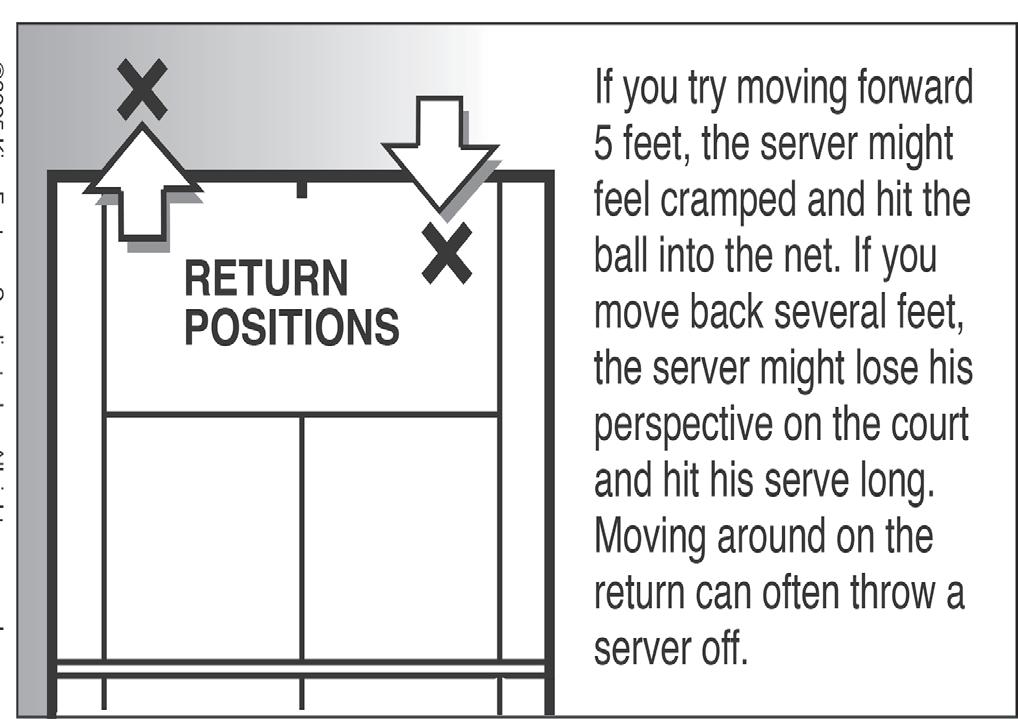

Give your golf-related advertising message targeted visibility in full color in this weekly 2” x 6” fixed location
$159 per insertion reaches 70,000+ readers each week at the low cost of only $2.27 per 1,000 reader impressions!
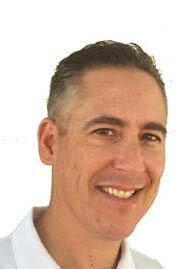

by Jason Jenkins
Keeping your eye on the ball has been a misleading phrase for decades of golf instruction. The worst misuse of the concept results when players try to keep their head down or the eyes facing the ground long after the ball has been struck.
These golfers get stuck not transferring weight correctly and inhibiting proper arms swing release in the follow through. It’s better to simply allow the head to turn toward the target with the follow through.
Players like Dustin Johnson and Henrik Stenson even turn their head toward the target before the ball is struck. “Looking off the ball” was a principle made popular by teacher Jimmy Ballard, who hated the eyes down syndrome.
So if you do watch the ball take off in flight toward the target,
truly be keeping your eye on the ball.




Linda Thistle
The idea of Go Figure is to arrive at the figures given at the bottom and right-hand columns of the diagram by following the arithmetic signs in the order they are given (that is, from left to right and top to bottom). Use only the numbers below the diagram to complete its blank squares and use each of the nine numbers only once. DIFFICULTY:
